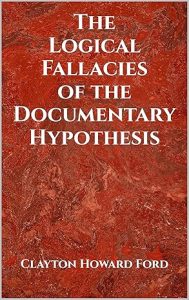Lesson 5
4. God the Son
Jesus Christ is, of course, the central figure of Christianity. He is why Christianity is called Christianity. The Scriptures clearly teach that Jesus was more than a man: he was and is also God in the flesh. The Scriptures also tell us why it is necessary to believe that he is both God and man:
And this is His commandment: that we should believe on the name (that is, who he really is) of His Son Jesus Christ and love one another, as He gave us commandment (1 John 3:23).
He who has the Son has life; he who does not have the Son of God does not have life (1 John 5:12).
“Therefore I said to you that you will die in your sins; for if you do not believe that I AM, you will die in your sins” (John 8:24).
If we do not believe in Jesus, the REAL Jesus, the one who is both God and man, we will die in our sins.
Before we can begin to understand how Jesus could be both man and God, we need to understand the difference between nature and person.
Nature means kind or sort. For example, God created all of the animals, each “according to its kind” (Gen. 1:25). Specifically, nature means “the particular combination of qualities belonging to a person, animal, thing, or class by birth, origin, or constitution; native or inherent character.” For example, human nature is the set of characteristics that are common to humans. Human nature is what makes us human. Horse nature is what makes horses, horses. Dog nature is what makes dogs, dogs. The divine nature is what makes God, God.
Person refers to the individual who is distinct from everyone else. All of us have the human nature in common, but each of us is a distinctive person.
Jesus is one person, that is, he is an individual distinct from everyone else, including the Father and the Holy Spirit, and he has two natures, one human and one divine. All of the heresies fail to understand this in one way or another: they either deny that Christ was one person or they deny that he had two natures, one human and one divine.
I will show you what the major heresies taught (because some of them are still around) so you can understand where they went wrong. We will also see what the Scriptures say so we can see what is the correct way of understanding who Jesus is.
Dynamic Monarchianism, also known as Adoptionism, says that Jesus, who was a mere man, was adopted as the Son of God at his baptism or at his resurrection. They see Jesus as one person with only one nature, the human nature.
John 1:1,14 says that Jesus has always been God and so was never adopted.
Ebionites say that Jesus was a mere man and that Christ descended on him at baptism. Another version says that Christ descended on him after the temptation. They see Jesus as two persons in one body. Jesus is a man who has the human nature and Christ is the Son of God who has the divine nature.
Luke 2:11 says that Jesus was declared to be the Christ at his birth.
Modalistic Monarchianism (Sabellianism) says that Jesus is merely one mode in which God may appear. The Father and the Holy Spirit are the other modes. In other words, God is only one person who sometimes appears as the Father, sometimes as the Son and sometimes as the Holy Spirit. They see Jesus as one person with only one nature, the divine nature.
In John 14:16-17, Jesus speaks of the Father and the Holy Spirit as persons distinct from him and from each other. In other words, he speaks of them as three distinct persons.
Gnosticism says that Christ is a being who is almost like God. Christ did not actually take on a body of flesh and blood but only appeared to have taken on a human body. They see Christ as one person with only one nature, a semi-divine nature. Christian Science is a form of Gnosticism.
1 John 4:2-3 condemns Gnosticism.
Arianism says that Christ is the first created being and is like God. He has a similar substance (nature) as the Father, but not the same substance (nature) as the Father. He did take on flesh and become a man. They see Jesus as one person with two natures, but not with the divine nature. This is the position taken by the Jehovah’s Witnesses.
John 1:3 says that the Word, Jesus, created all things, so Jesus is not a created being.
Of these heresies, Arianism proved to be the most influential. Many believers and Church leaders in the late third century and early fourth century became followers of this heresy and it almost split the Church. Constantine called for a council of bishops to convene in the city of Niceae in 325 AD to decide if Arianism was in fact a heresy. This council produced the first version of the Nicene Creed, which affirmed that Christ was both man and God and had the same substance (nature) as the Father. The Arian heresy, however, persisted, forcing the Council of Constantinople to issue a revision of the Nicene Creed in 381 AD. This is the final version of the Nicene Creed. The word “catholic” here means “universal”; it does not refer to the Roman Catholic Church.
We believe in one God, the Father Almighty, Maker of heaven and earth, and of all things visible and invisible.
And in one Lord Jesus Christ, the only-begotten Son of God, begotten of the Father before all worlds, Light of Light, very God of very God, begotten, not made, being of one substance with the Father; by whom all things were made; who for us men, and for our salvation, came down from heaven, and was incarnate by the Holy Ghost of the Virgin Mary, and was made man; he was crucified for us under Pontius Pilate, and suffered, and was buried, and the third day he rose again, according to the Scriptures, and ascended into heaven, and sits on the right hand of the Father; from thence he shall come again, with glory, to judge the quick and the dead; whose kingdom shall have no end.
And in the Holy Ghost, the Lord and Giver of life, who proceeds from the Father, who with the Father and the Son together is worshiped and glorified, who spoke by the prophets. In one holy catholic and apostolic Church; we acknowledge one baptism for the remission of sins; we look for the resurrection of the dead, and the life of the world to come. Amen.
This creed is the only one accepted by all of the Christian denominations.








